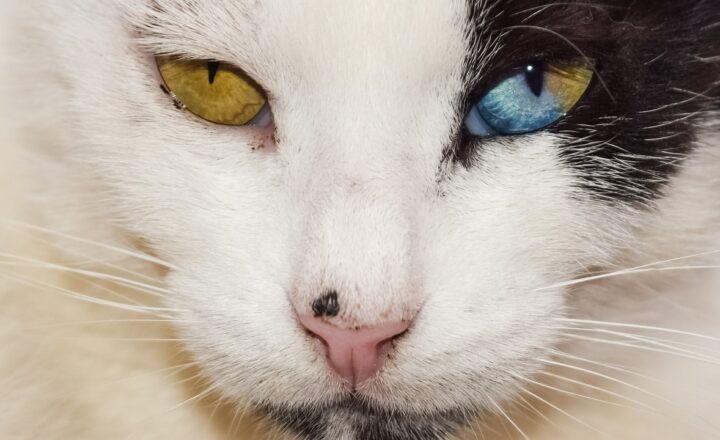How Zoos are Using Virtual Reality to Help Animals Thrive in Enclosures
November 12, 2024

Zoos have long faced challenges in providing their inhabitants with an enriching environment that mirrors their natural habitats. The advent of technology has paved the way for innovative solutions, with virtual reality (VR) emerging as a groundbreaking tool to enhance the well-being of animals in captivity. By creating immersive experiences that replicate the wild, zoos are using VR to foster natural behaviors and promote mental well-being in their animal residents.
1. The Concept of Virtual Reality in Zoos
Virtual reality involves creating a simulated, interactive environment that can be experienced through VR headsets or other devices. In a zoo context, VR can help animals by stimulating their senses and creating an engaging atmosphere. It provides a way for animals to experience sights, sounds, and even scents that they would encounter in their natural surroundings.
Zoos have begun integrating VR technologies into their animal care programs, catering to various species’ needs. By providing stimuli that remind animals of their natural habitats, zoos can help reduce stress and anxiety often experienced by animals in captivity.
2. The Benefits of VR for Animals
Using virtual reality in zoos offers numerous benefits to animal welfare, including:
- Enhanced Enrichment: Virtual environments can replace or supplement traditional enrichment tools, such as toys or puzzles, by providing engaging and immersive experiences that combine physical and sensory stimulation.
- Stress Reduction: Familiar sights and sounds can help reduce animals’ stress levels, providing comfort and a sense of security. This is particularly beneficial for animals that exhibit signs of anxiety due to confinement.
- Behavioral Improvement: VR experiences can encourage natural behaviors that animals may not express in a confined environment. This allows them to interact with stimuli that promote foraging, exploration, and social interaction, leading to overall health improvements.
- Social Interaction: Some VR experiences allow animals to engage with virtual companions, enhancing socialization and preventing loneliness among solitary species.
For example, a virtual savanna could be developed for lions, complete with the sounds of rustling grass and the distant calls of other wildlife, allowing them to practice their hunting instincts in a stress-free environment.
3. Case Studies: Successful Implementations of VR in Zoos
Several zoos around the world are already leveraging virtual reality for animal welfare:
- The San Diego Zoo: The San Diego Zoo has pioneered the use of VR by creating a sanctuary environment for their gorillas. With the help of VR, gorillas work through challenges that simulate their foraging behavior, helping them maintain their physical and mental health while also reducing stereotypic behaviors that arise from confinement.
- The Oregon Zoo: The Oregon Zoo has introduced a VR experience for their elephants that integrates sight, sound, and scent, replicating the lush jungles of Southeast Asia. This immersive experience encourages natural behaviors such as foraging and social interaction among group members.
- The Zoo of Living Treasures in Pennsylvania: This zoo implemented a VR program that allows their big cats to experience virtual prey scenarios, aiding in behavioral and instinctual engagement, leading to reduced stress and improved overall health metrics.
These implementations highlight how VR can be successfully tailored to meet species-specific needs and contribute to their physical and mental well-being.
4. Challenges and Considerations
While VR offers promising benefits, there are challenges and considerations to ensure animals thrive in virtual environments:
- Technical Limitations: The development and implementation of VR technology require significant investment, and maintaining these systems can be resource-intensive. Zoos may face budget constraints that hinder widespread adoption.
- Species-Specific Adaptations: Different species have unique sensory preferences and requirements. A successful VR program must be carefully tailored to each animal’s sensory and behavioral needs, considering how they perceive their environments.
- Animal Acceptance: Not all animals will respond positively to VR experiences, and some may experience fear or anxiety. Proper assessment and gradual introductions are necessary to ensure animals feel comfortable interacting with the technology.
It’s crucial for zoos to conduct ongoing assessments and research to maximize the benefits of VR while addressing these challenges.
5. The Future of Virtual Reality in Zoos
As technology continues to evolve, the future of virtual reality in zoos appears bright:
- Advancements in Technology: Future innovations in VR technology, such as improved graphics, sound quality, and interactivity, will enhance the quality of virtual environments, leading to more immersive experiences for animals.
- Integration into Animal Care Practices: Zoos may increasingly adopt VR as an integral part of standard animal care protocols, focusing on creating a daily routine that incorporates virtual experiences to promote mental stimulation and engagement.
- Collaboration with Tech Companies: Future collaborations between zoos and technology companies can lead to development of specialized VR solutions that cater to the unique needs of various animal species.
- Educational Outreach: Zoos can potentially use VR technology to create educational experiences for visitors, providing insights into animal welfare practices and helping to foster a connection between wildlife and the public.
As more zoos adopt virtual reality, the impact on animal well-being and conservation efforts will likely lead to positive outcomes for both animals and the organizations responsible for their care.
Conclusion
The integration of virtual reality in zoos marks a significant step toward improving animal welfare in captivity. By replicating natural habitats and engaging animals in stimulating environments, VR technology assists in combating the effects of confinement and promotes healthier behaviors. As zoos continue to explore this promising avenue, they not only enhance the lives of their residents but also contribute to broader conservation efforts and education initiatives. The future looks hopeful for animals in zoos, as virtual reality technology aims to transform enclosures into vibrant, interactive experiences that closely mirror the wild for the well-being of all species housed within.







